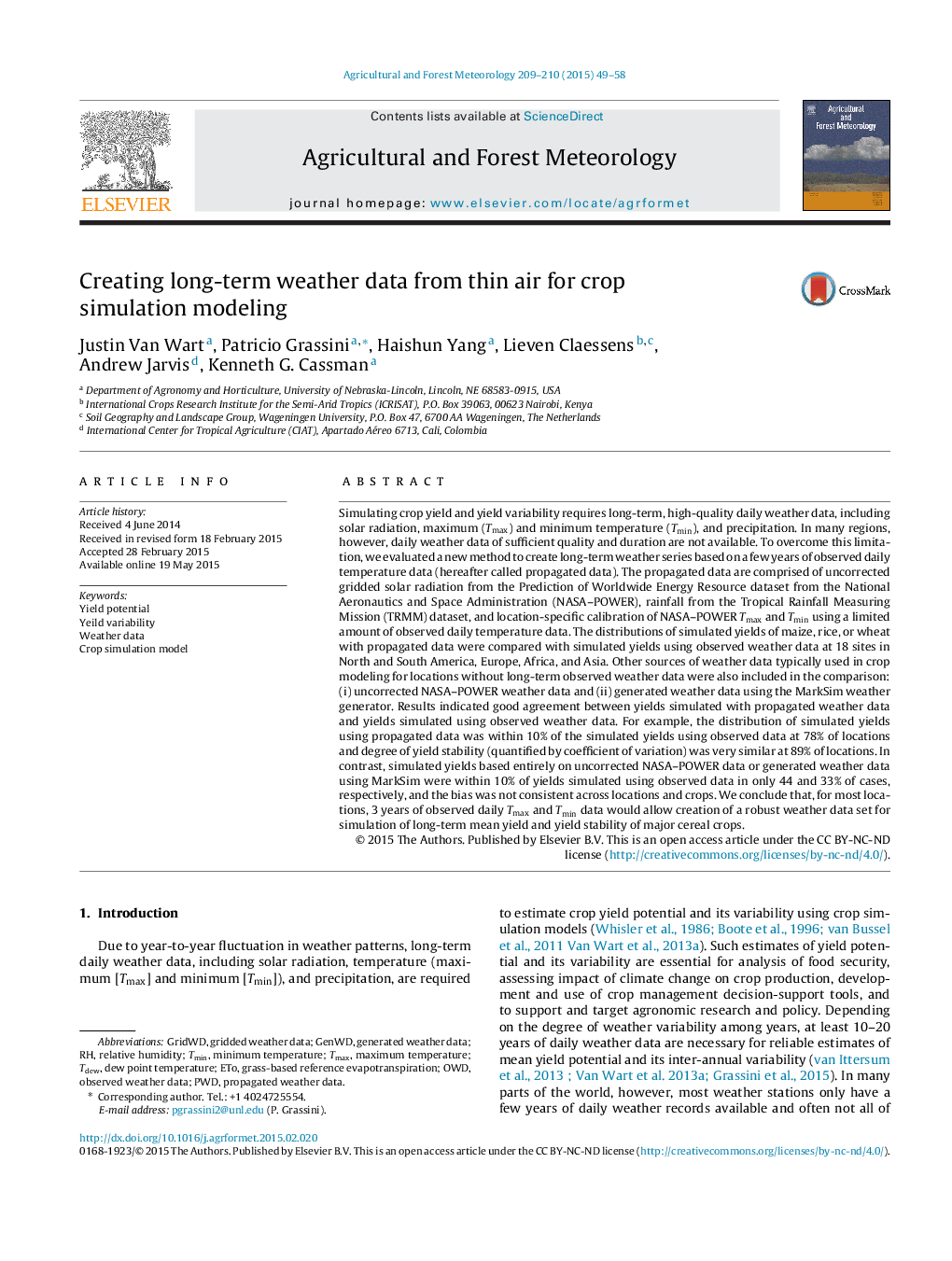| کد مقاله | کد نشریه | سال انتشار | مقاله انگلیسی | نسخه تمام متن |
|---|---|---|---|---|
| 6537281 | 158329 | 2015 | 10 صفحه PDF | دانلود رایگان |
عنوان انگلیسی مقاله ISI
Creating long-term weather data from thin air for crop simulation modeling
ترجمه فارسی عنوان
ایجاد داده های آب و هوایی بلند مدت از هوا ناز برای مدل سازی شبیه سازی محصول
دانلود مقاله + سفارش ترجمه
دانلود مقاله ISI انگلیسی
رایگان برای ایرانیان
کلمات کلیدی
موضوعات مرتبط
مهندسی و علوم پایه
علوم زمین و سیارات
علم هواشناسی
چکیده انگلیسی
Simulating crop yield and yield variability requires long-term, high-quality daily weather data, including solar radiation, maximum (Tmax) and minimum temperature (Tmin), and precipitation. In many regions, however, daily weather data of sufficient quality and duration are not available. To overcome this limitation, we evaluated a new method to create long-term weather series based on a few years of observed daily temperature data (hereafter called propagated data). The propagated data are comprised of uncorrected gridded solar radiation from the Prediction of Worldwide Energy Resource dataset from the National Aeronautics and Space Administration (NASA-POWER), rainfall from the Tropical Rainfall Measuring Mission (TRMM) dataset, and location-specific calibration of NASA-POWER Tmax and Tmin using a limited amount of observed daily temperature data. The distributions of simulated yields of maize, rice, or wheat with propagated data were compared with simulated yields using observed weather data at 18 sites in North and South America, Europe, Africa, and Asia. Other sources of weather data typically used in crop modeling for locations without long-term observed weather data were also included in the comparison: (i) uncorrected NASA-POWER weather data and (ii) generated weather data using the MarkSim weather generator. Results indicated good agreement between yields simulated with propagated weather data and yields simulated using observed weather data. For example, the distribution of simulated yields using propagated data was within 10% of the simulated yields using observed data at 78% of locations and degree of yield stability (quantified by coefficient of variation) was very similar at 89% of locations. In contrast, simulated yields based entirely on uncorrected NASA-POWER data or generated weather data using MarkSim were within 10% of yields simulated using observed data in only 44 and 33% of cases, respectively, and the bias was not consistent across locations and crops. We conclude that, for most locations, 3 years of observed daily Tmax and Tmin data would allow creation of a robust weather data set for simulation of long-term mean yield and yield stability of major cereal crops.
ناشر
Database: Elsevier - ScienceDirect (ساینس دایرکت)
Journal: Agricultural and Forest Meteorology - Volumes 209â210, 15 September 2015, Pages 49-58
Journal: Agricultural and Forest Meteorology - Volumes 209â210, 15 September 2015, Pages 49-58
نویسندگان
Justin Van Wart, Patricio Grassini, Haishun Yang, Lieven Claessens, Andrew Jarvis, Kenneth G. Cassman,
